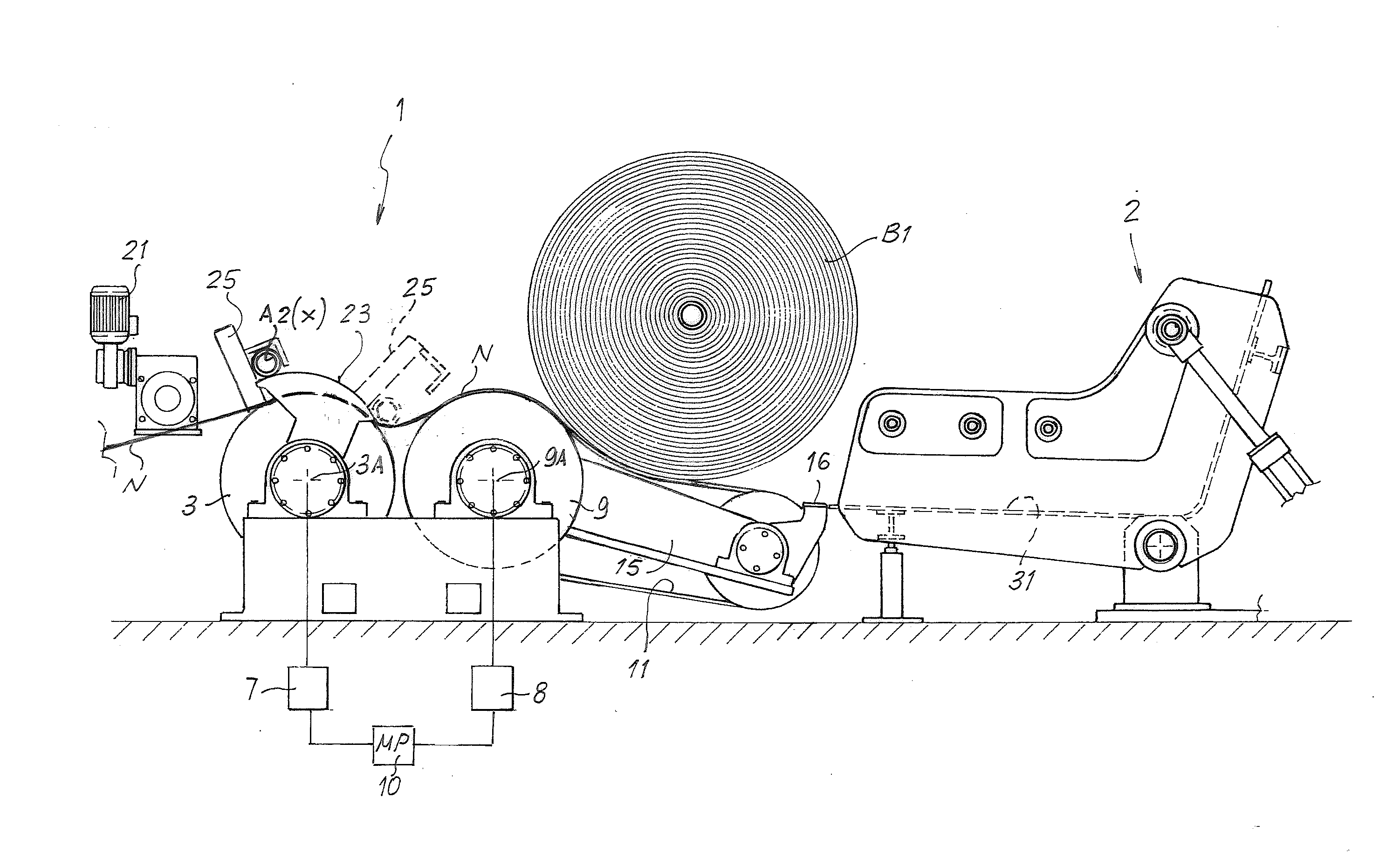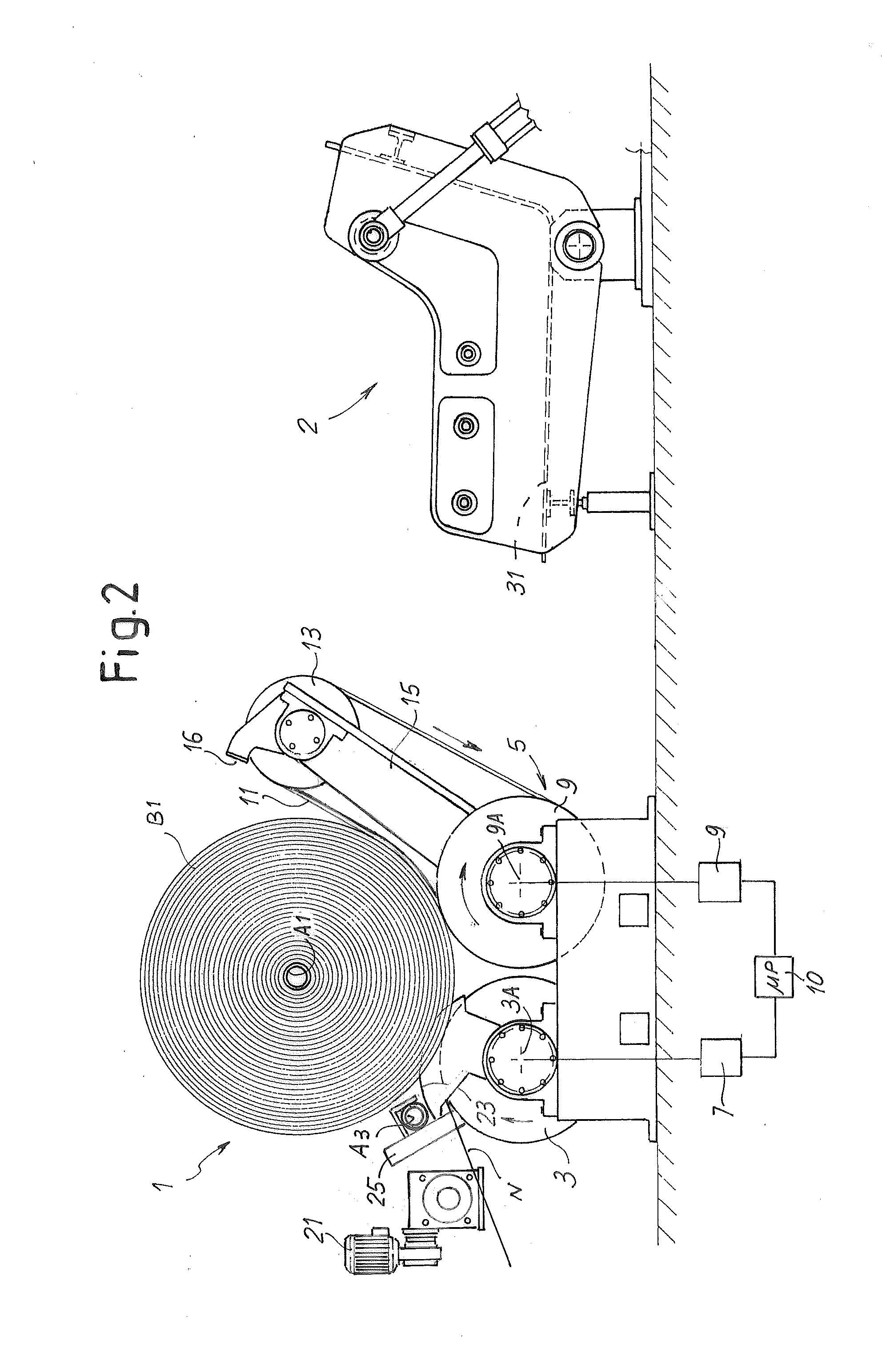Machine and method for winding reels of web material
- Summary
- Abstract
- Description
- Claims
- Application Information
AI Technical Summary
Benefits of technology
Problems solved by technology
Method used
Image
Examples
Embodiment Construction
[0067]The rewinding machine, indicated in its entirety with number 1, comprises a first winding member 3 and a second winding member 5. In some embodiments the first winding member 3 is constituted by, or comprised of, a winding roller rotating around a substantially horizontal axis 3A. The rotation of the roller is controlled by an electric motor, schematically indicated with number 7.
[0068]In some embodiments, the second winding member 5 comprises a second winding roller 9 rotating around a substantially horizontal axis 9A substantially parallel to the axis 3A of the winding roller 3. The winding rollers 3 and 9 form a nip therebetween and define a winding cradle.
[0069]In some embodiments the winding roller 9 is driven into rotation by a second motor 8, distinct from the motor 7. The motors 7 and 8 are preferably connected to a central control unit 10, with which also the other members of the machine are interfaced to perform the winding cycle described below. The control unit 10 ...
PUM
| Property | Measurement | Unit |
|---|---|---|
| rotation speed | aaaaa | aaaaa |
| speed | aaaaa | aaaaa |
| speed | aaaaa | aaaaa |
Abstract
Description
Claims
Application Information
 Login to View More
Login to View More - R&D
- Intellectual Property
- Life Sciences
- Materials
- Tech Scout
- Unparalleled Data Quality
- Higher Quality Content
- 60% Fewer Hallucinations
Browse by: Latest US Patents, China's latest patents, Technical Efficacy Thesaurus, Application Domain, Technology Topic, Popular Technical Reports.
© 2025 PatSnap. All rights reserved.Legal|Privacy policy|Modern Slavery Act Transparency Statement|Sitemap|About US| Contact US: help@patsnap.com



